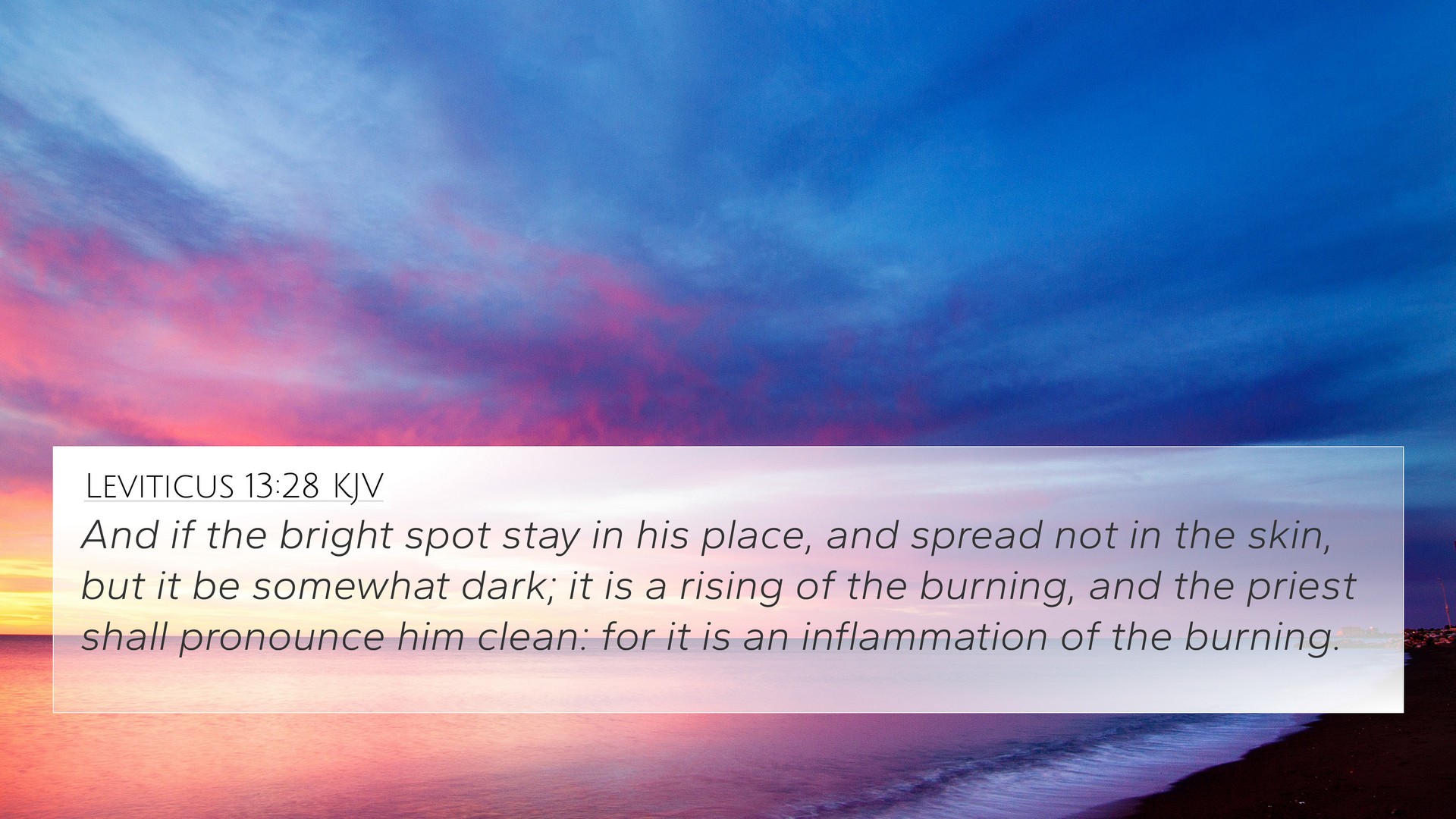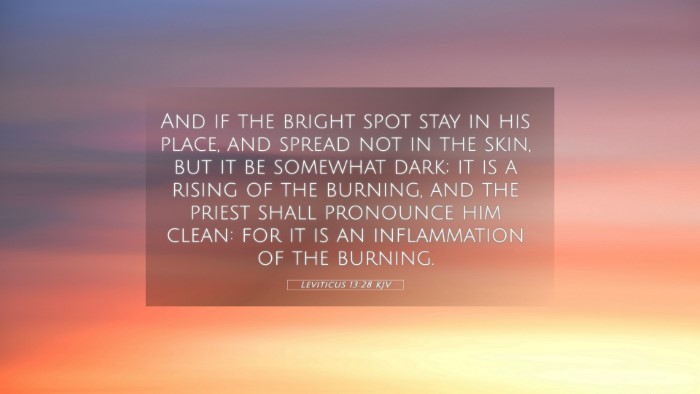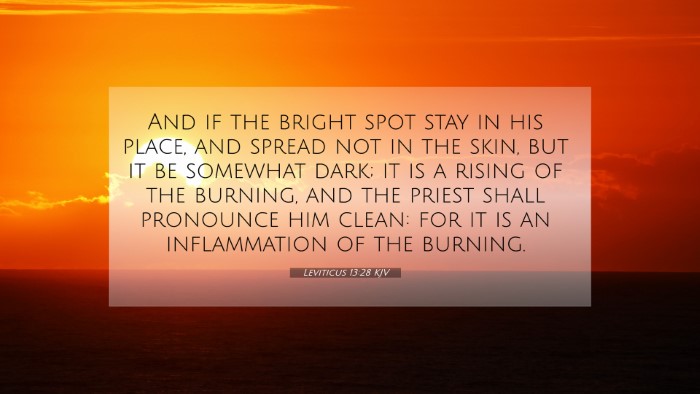Meaning and Interpretation of Leviticus 13:28
Leviticus 13:28 states: "But if the bright spot stays in its place and has not spread, it is the scar of the boil, and the priest shall pronounce him clean." This directive speaks to a specific case within the broader context of laws regarding skin diseases, instructing the priest on how to discern the nature of the skin affliction.
Contextual Background
In the book of Leviticus, the Lord provided the Israelites with laws concerning purity and health, particularly concerning diseases of the skin, often referred to as 'leprosy' in a general sense. The specifics of this verse give insight into the priestly duties and the care that must be taken to diagnose these conditions.
Summary of Commentary Insights
1. Matthew Henry's Commentary:
-
Henry emphasizes the importance of the priest's role in determining cleanliness and the implications it has for the broader community, showing that cleanliness is not just physical but also relational and societal.
-
He points out that the condition being evaluated here reflects God's meticulous care for His people's health and spiritual purity.
2. Albert Barnes's Commentary:
-
Barnes elucidates that this verse advocates for careful examination, suggesting that God's laws require thorough checks for true health status rather than assumptions based on initial appearances.
-
He explains the significance of the priest declaring cleanliness as a spiritual metaphor for the community's broader moral and spiritual health.
3. Adam Clarke's Commentary:
-
Clarke discusses the notion of 'scar' indicating healing while still marking a history; this suggests a paradigm in which past afflictions do not preclude future purity.
-
Furthermore, Clarke links these laws to the underlying principle that God desires His people to embody cleanliness not just in health, but in all aspects of life.
Bible Verse Cross-References
Leviticus 13:28 resonates thematically and contextually with various other scripture passages:
- Leviticus 14:3-7: Instructions regarding purification rituals for leprosy charges
- Matthew 8:1-4: Jesus healing a leper and sending him to the priest to fulfill the law
- Luke 17:12-19: The account of the ten lepers and the one who returned to give thanks
- 1 Peter 2:24: Christ's atonement as healing for both physical and spiritual blemishes
- James 5:14: Mentions anointing the sick, embodying the principles of spiritual and physical cleanliness
- Hebrews 13:12: Connection between Christ’s sacrifice and ceremonial law
- Isaiah 53:5: The notion that by His stripes we are healed echoes the themes present in Levitical law
Tools for Deeper Understanding
Engaging with the themes present in Leviticus 13:28 can be enhanced through various resources:
- Bible Concordance: A tool for finding words and themes related to sickness and healing across Scripture.
- Bible Cross-Reference Guide: A structured approach to studying interconnected verses.
- Cross-Reference Bible Study: Methods to compare analogous accounts of healing in both Testaments.
- Bible Chain References: Establishing links between sufferings in the Old Testament and their fulfillment in the New Testament.
Conclusion
Leviticus 13:28 serves as a profound reminder of God’s directives concerning health, holiness, and the community. The connection of this verse to various others illustrates a cohesive narrative regarding sin, healing, and the importance of priestly duties in maintaining community health. Engaging with these texts encourages believers to explore the intricate relationships in Scripture and understand God's enduring message of hope and restoration.


